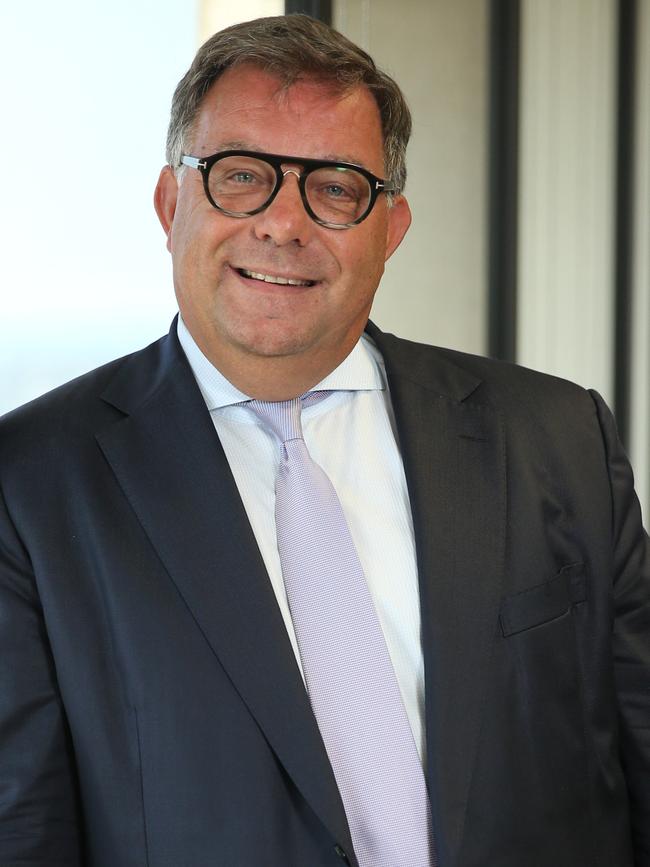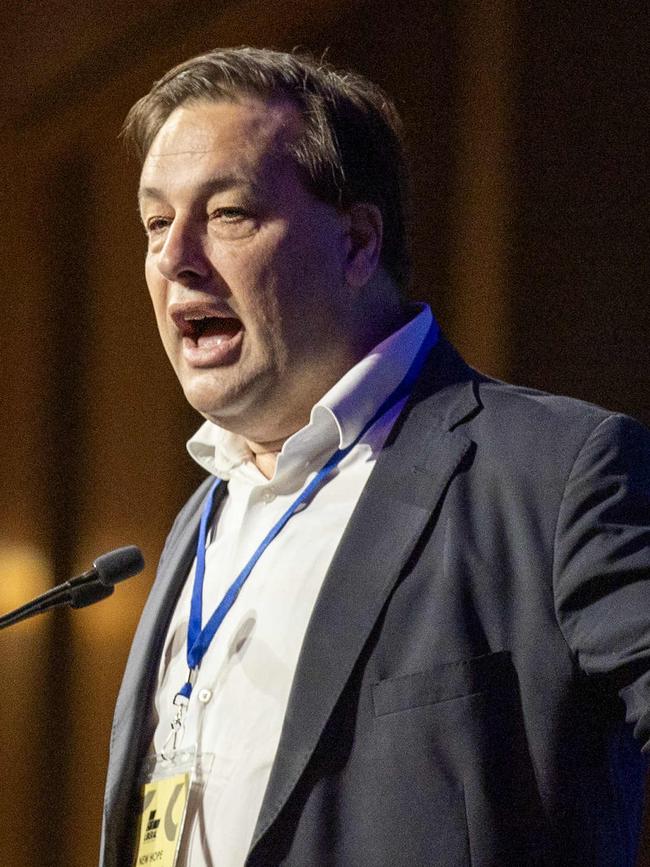
All credit to ABC 7.30 presenter Sarah Ferguson, who last Tuesday asked Sussan Ley the most incisive question of the week: “What is it about winning elections that you understand that John Howard doesn’t?”
Two days was long enough to remind the Liberal and National party leaders that a broken Coalition cannot win. Nine presenter Allison Langdon put the dilemma succinctly when John Howard appeared on A Current Affair: “You know what, Mr Howard? Maybe they, they kiss and make up next week, or otherwise Sussan Ley unfollows Littleproud on Instagram and goes no contact and ghosts him.”
“ I can’t handle all the lingo of social media,” replied Howard. “But the longer they stay apart, the more attitudes will harden.”
No one is under any illusion that the unity the Coalition achieved under Peter Dutton will be restored anytime soon. Re-establishing a working relationship is the easy part. The squabbling between the Liberals and Nationals is merely a proxy war for a fight for the soul of the Liberal Party.
The tension between the modernisers and conservatives that overshadowed three terms in government lay dormant under Dutton. His patience and skill kept the parliamentary party together through a fractious referendum and enabled the party to overcome the nuclear taboo.
Yet the dispute has been simmering, particularly within the faction-ridden NSW division, where leading figures among the modernisers had been quietly positioning for a post-election power grab. On Sunday, May 4, less than 24 hours after the polls closed, the modernisers gathered over lunch to discuss tactics. Their host was Michael Photios, who holds no formal position in the party but retains influence through his factional network and his lobbying firm, PremierNational.
The decision was taken to back Ley over Angus Taylor in the forthcoming leadership contest. They argue the Nationals have contaminated the Liberal Party brand, especially in seats behind the teal wall.


Jason Falinski, whose parliamentary career was cut short by Sophie Scamps’s victory in Mackellar in 2022, voiced his frustration in an interview with Peter FitzSimons in the Nine newspapers at the weekend. He claimed the Nationals represented just a small section of the electorate but had been driving Liberal policies.
“We must go our way from the National Party … I think we should reconcile only after we’ve dealt with the fundamental issues underlying the problems that we face,” Falinski said.
His tail-wagging-the-dog argument was echoed in an ABC podcast by Malcolm Turnbull when the former prime minister accused the Nationals of “holding a gun to the Liberal Party’s head”.
Turnbull is chairman of Turnbull Renewables and recently sold two Upper Hunter pumped-hydro projects. He took a swipe at nuclear power recently as a “truly crazy idea”.
As in 2015 when Turnbull deposed Tony Abbott, climate and energy policy is the flashpoint for factional disagreements. Three days after the election, senator Maria Kovacic tested the waters on behalf of the modernisers by appearing on ABC Radio National Breakfast to call for the Liberals’ nuclear strategy to be scrapped.
Her advance was supported by a newly minted organisation called Liberals Against Nuclear, which ran blanket advertisements on Sky News to ram home the message. The organisation purports to be a group of concerned Liberal Party members appealing to the party’s true values.
In reality, it’s an exercise in astroturfing. This movement, allegedly a grassroots one, registered with ASIC at the start of March and was orchestrated and funded by a person or persons unknown.
The nuclear debate has been contaminated by purportedly grassroots organisations such as Farmers for Climate Action, Veterinarians for Climate Action and Bushfire Survivors for Climate Action. All three were created by Environmental Leadership Australia, a registered charity with links to Photios. ELA received $5m in funding last year from undisclosed sources and handed out $1.5m in grants and donations to friendly organisations.
As I reported on these pages a year ago, ELA flew seven Coalition MPs to Dubai in 2023 for COP28. They included former minister Paul Fletcher, former NSW treasurer Matt Kean and Kovacic. ELA is listed as a client of Photios’s PremierNational on the lobbyist register. These tangled relationships have blurred the line between principle and profit, and fuelled the emotion driving the policy split.

Conservatives such as Taylor, who look to the suburbs and regions for the party’s future strength, threaten the dominance of the party’s metro elite stranded in the former heartland.
The Liberal Party’s tightly scripted campaign struggled to talk to both constituencies. A vigorous crusade against offshore wind would have strengthened Liberals’ chances of winning Paterson and Cunningham. It might have helped in Bendigo and Eden-Monaro, where the destructive effect of wind, solar and new transmission lines is keenly felt.
Yet campaign HQ feared that opposition to renewable energy would have killed the chance of recovering Wentworth and other teal seats. Appeals from Wollongong and Port Stephens for campaign posters and brochures playing to local concerns were brushed aside.
The split mirrors the profound cultural divide that has changed the nature of politics across the West this century. The ABC’s Laura Tingle claimed the split liberated the Liberals to move to the centre and leave the Nationals to stew on the backbenches as rump minor party. Yet the chances of finding a sweet spot in the middle of the left-right axis diminish with every election.
The economic, social, and philosophical differences are profound. The unavoidable truth is that the centre-right is weaker and more divided than it has been since the debacle of the 1943 election when John Curtin’s Labor Party was returned with 58.2 per cent of the two-party-preferred vote, the highest in its history.
Robert Menzies responded to that defeat by convening the Non-Labour Unity Conference in Canberra the following year and set about the task of combining 14 parties under one banner and one body of ideas. In her effort to bridge a divided Coalition, Ley unwittingly echoed the rhetoric of 1944 when Menzies began stitching the centre-right back together under a single vision.
“We will all work hard as the parties on the other side of the chamber from Labor,” she said.
The party’s path back to government will be by stating what it proposes rather than what or who it opposes. It must begin with a repudiation of factionalism and the vested interests that lie behind it. The Liberals must offer a vision of a brighter future than Labor’s reversion to big government policies, corporate welfare and crony capitalism. Ley must restore Menzies’ vision of a resourceful, enterprising and aspiring nation that considers individuals to be the motive force for progress.



